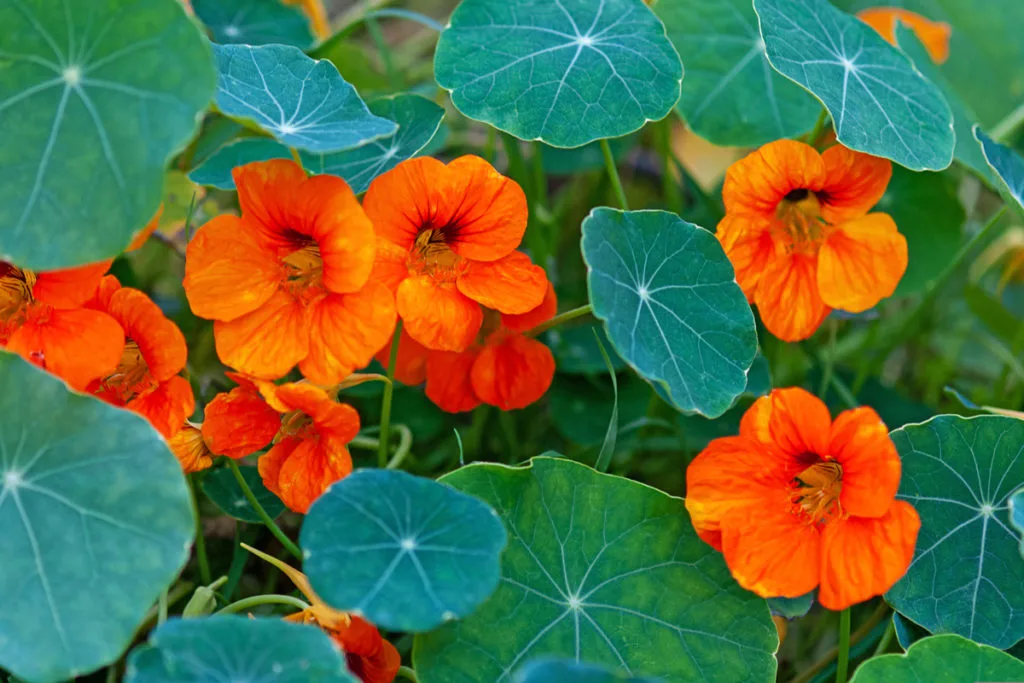
Nasturtiums are most famous for their rich vibrant colors that add a dash of summer to any landscape.
Most gardeners grow them for their beauty, reaping the handful of benefits that nasturtiums bring to gardens, namely their pollinator-attracting abilities (and their aphid attracting abilities too).
We’ve written in depth before about reasons to grow nasturtiums and how to do it.
You may be surprised to know nasturtiums have uses that go far beyond your flower bed.
This gorgeous little plant adds an interesting depth of flavor to most dishes, and it has a long history in traditional medicine.
Nasturtium leaves and flowers are rich in vitamin C, while the stems and seeds are packed with other vitamins and antioxidants, namely Lutein. This antioxidant is associated with improving and maintaining eye and skin health.
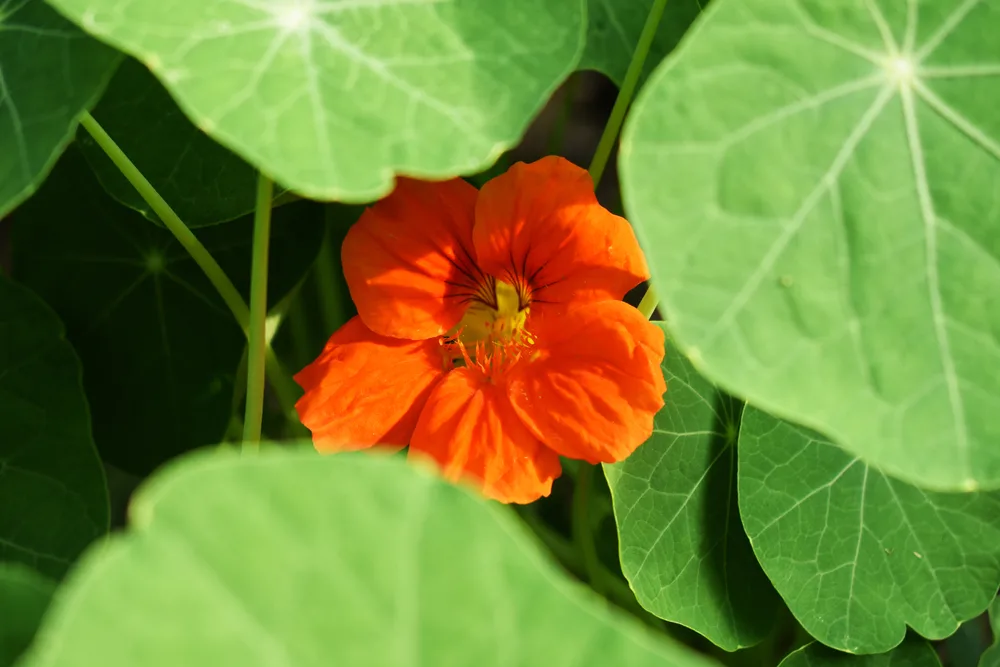
Some research even suggests that they have anti-bacterial and anti-inflammatory properties. It’s no wonder that traditional nasturtium teas and tonics help soothe sore throats and colds.
The best thing about nasturtiums is that they’re easily added to your diet, especially given the entire plant is edible.
Every part of this nifty plant has a tasty pepper-like flavor that adds a bit of a bite. Its leaves are more bitter than the other parts of the plant, with the seeds holding the most flavor. You’ll find the stems have a similar texture to chives, but they have more of that peppery taste than the leaves and flowers.
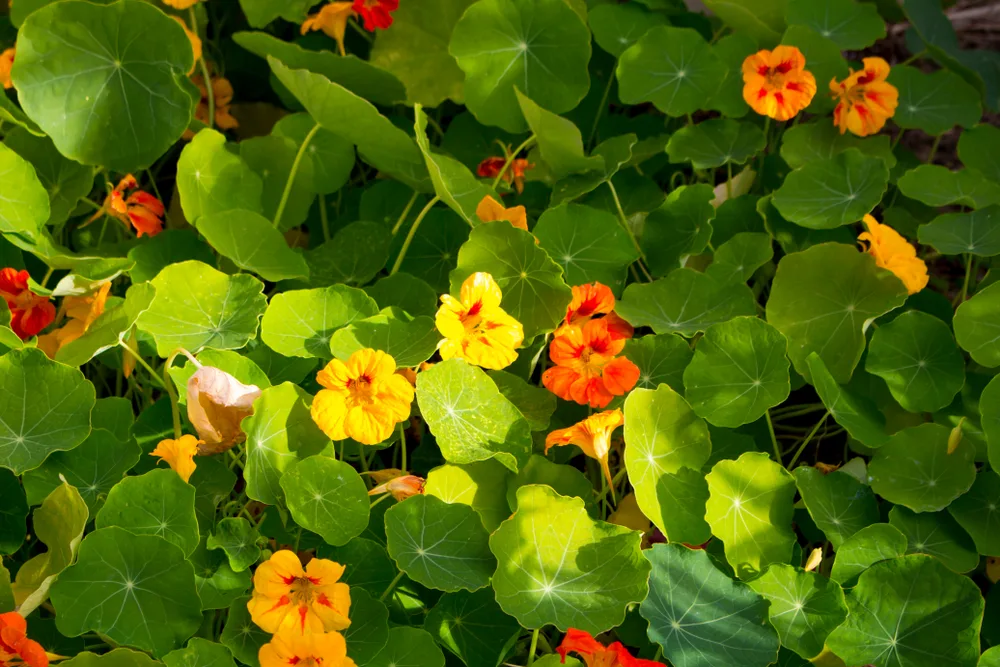
Even though the whole plant is edible, you’d truly be surprised how many ways you can use nasturtiums.
In The Pantry…
1. Nasturtium Hot Sauce
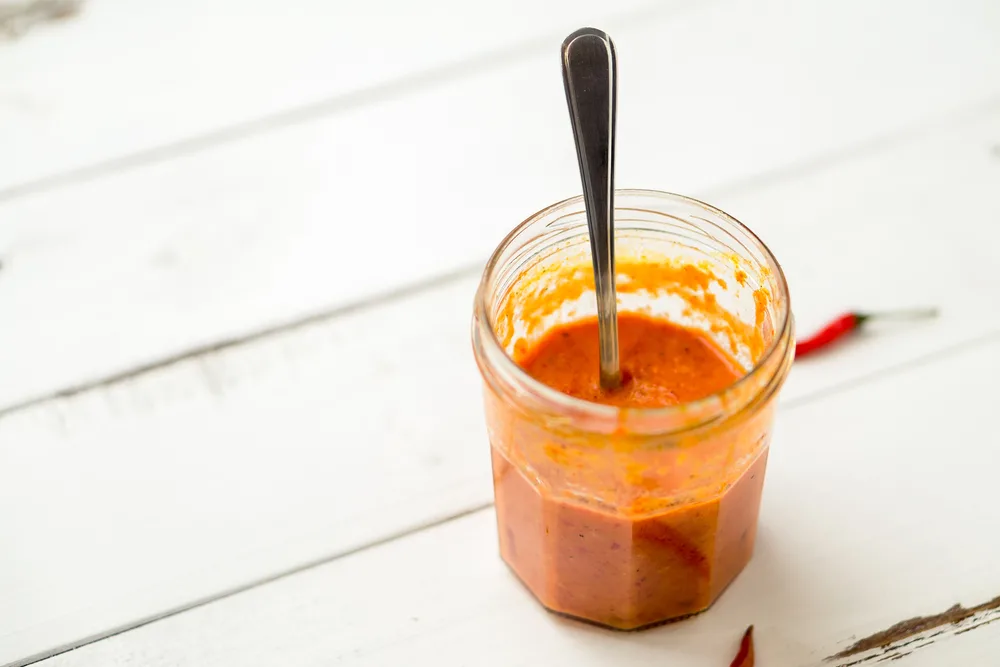
Homemade hot sauce is a perfect way to use nasturtium flowers. It’s a fantastic alternative to store-bought varieties, being just as tasty and having that dreamy fiery look that we all love in a good hot sauce.
For this simple recipe, you’ll need…
- 1 cup of nasturtium flowers (fresh and tightly packed)
- 1 clove of garlic
- 2 cups of apple cider vinegar
- 1 red chili (small)
‘Tool’ wise, all you’ll need is a sterilized jar big enough to hold all your ingredients.
Here’s the full tutorial for making your own nasturtium hot sauce.
This sauce can be used like any hot sauce, and it’ll keep for about 6 months in your pantry.
2. Nasturtium Yogurt Dip
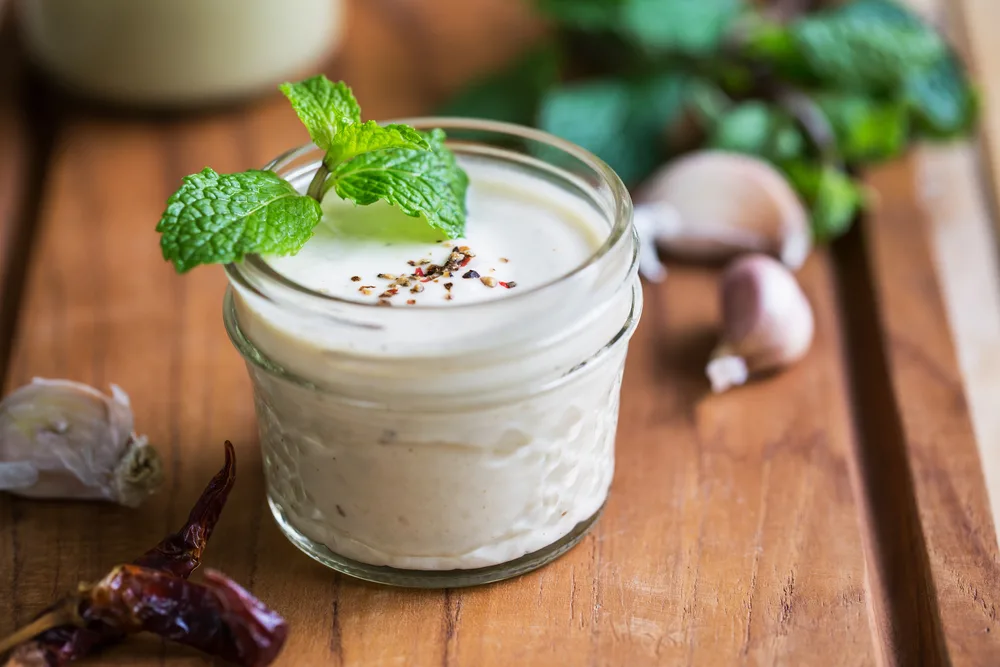
Nasturtium yogurt dip is another homemade delight that beats store-bought varieties any day. It’s an easy recipe that’s just as delicious and far healthier.
All you need is …
- 1 cup of yogurt (any will do, but Greek gives a thicker and creamier consistency)
- 1 teaspoon of cumin powder
- Salt to taste
- 1 cup of loosely packed nasturtium leaves and stems
Find the full recipe here.
3. Nasturtium Bread Roll Recipe
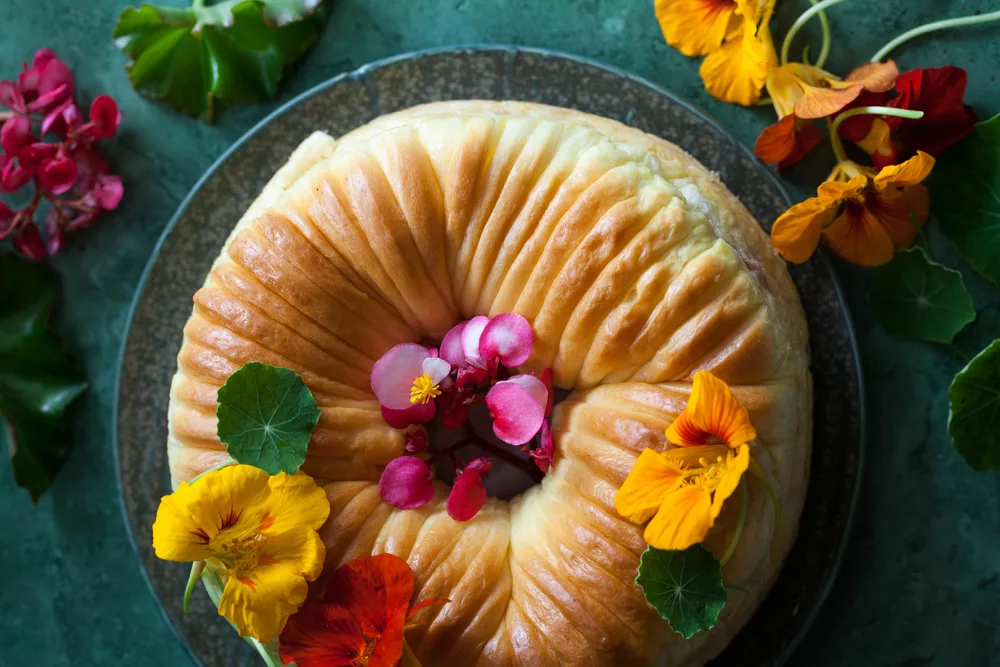
This interesting and unique recipe comes from Sustainable Holly. It’s an easy way to make green bread that’s delicious, natural, and will help you stand out at the next bring-along barbecue.
You’ll need…
- 4 cups of flour
- 1 teaspoon of salt
- 3 teaspoons of dry yeast
- 2 cups of lukewarm water
- 1 teaspoon sugar
- 1 tablespoon of oil
- 2 cups of nasturtium leaves mixed with fennel fronds
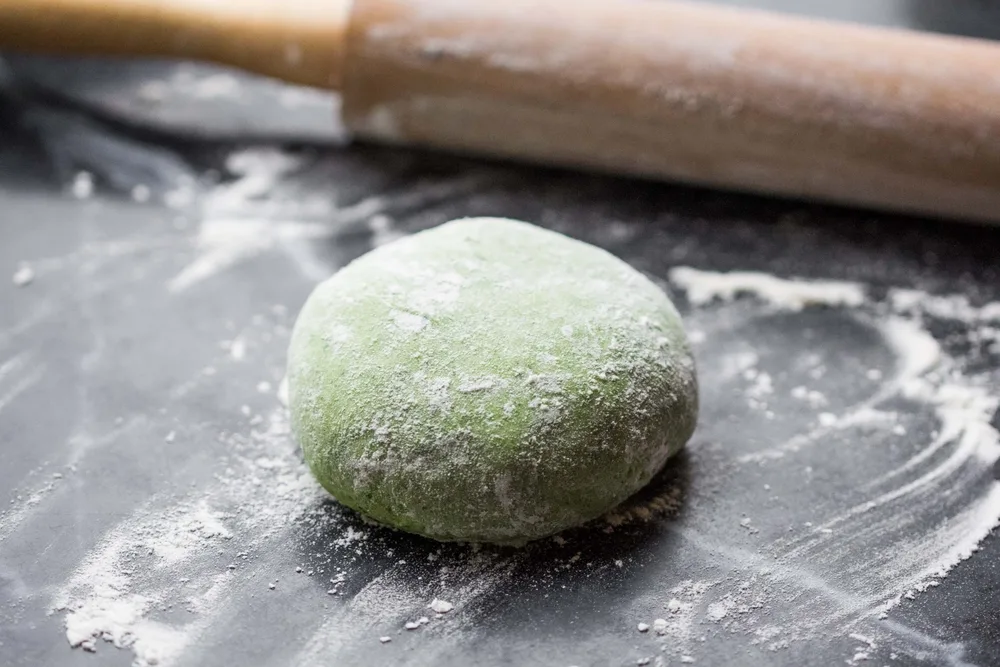
Get the full recipe at Sustainable Holly.
4. Nasturtium Orange Jam
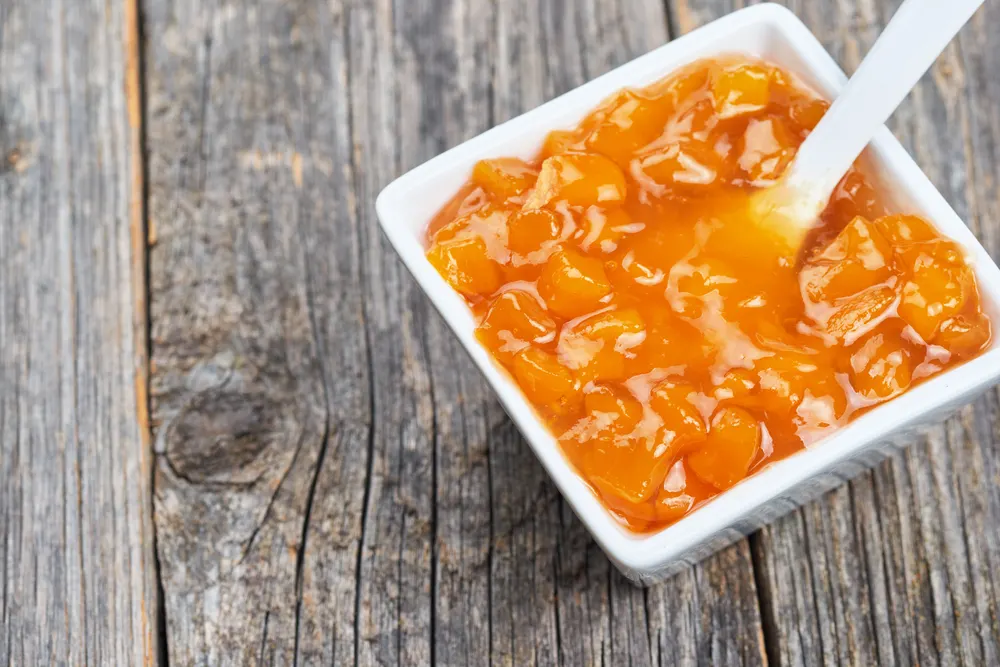
That’s right, you can make a delicious nasturtium jam to spread on your unique green nasturtium bread rolls.
This brilliant orange jam has Mediterranean roots and pairs well with most delicious delicacies, including Christmas treats like fruit cake. It of course has the slightly bitter taste that makes nasturtiums so tasty.
You can find the full recipe and how-to on 2pots2cook.
5. Nasturtium Butter
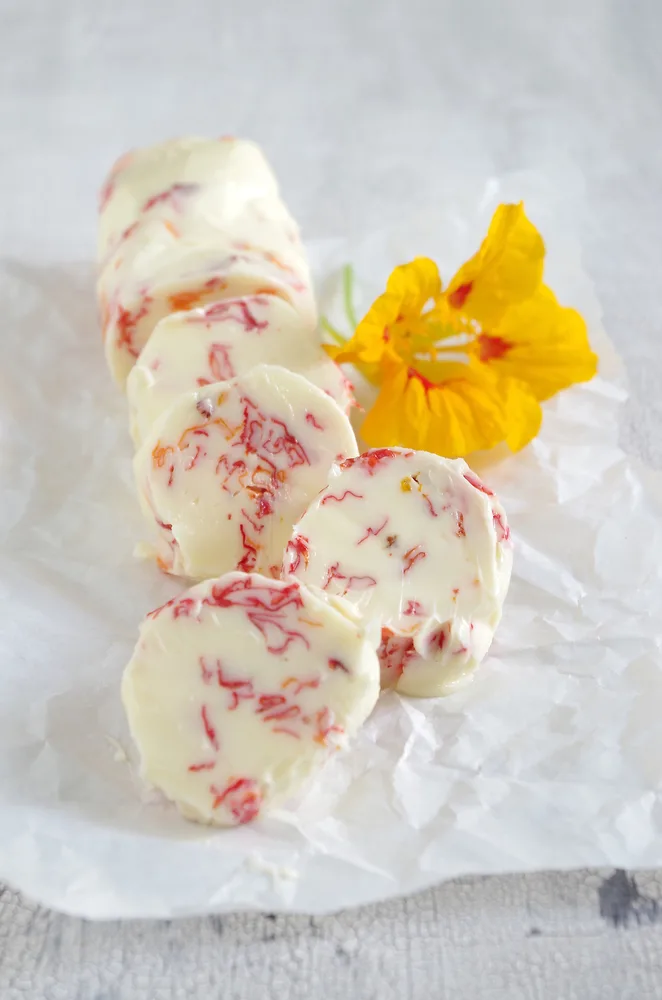
Herbaceous butters are something of a favorite of mine. Whether it’s sage butter or even chive butter, in my books, a flavored butter trumps ordinary butter any day.
Nasturtium butter is just as delicious and easy to make as most compound butters, with a touch of color.
All you need is …
- 3 tablespoons of chopped nasturtium flowers
- ½ teaspoon salt
- ½ cup of unsalted butter
- Ground black pepper
Making your butter is super easy. Simply mix your flowers and salt with your room temperature butter in a bowl and add a dash of black pepper for some extra peppery flavor.
Next, place your butter on some wax paper, and roll it into a butter log. Pop it into your fridge for about an hour to chill and firm, then it’ll be ready for sandwiches or as a delicious butter melt.
In Main Dishes and Snacks…
6. Replacement for Spinach
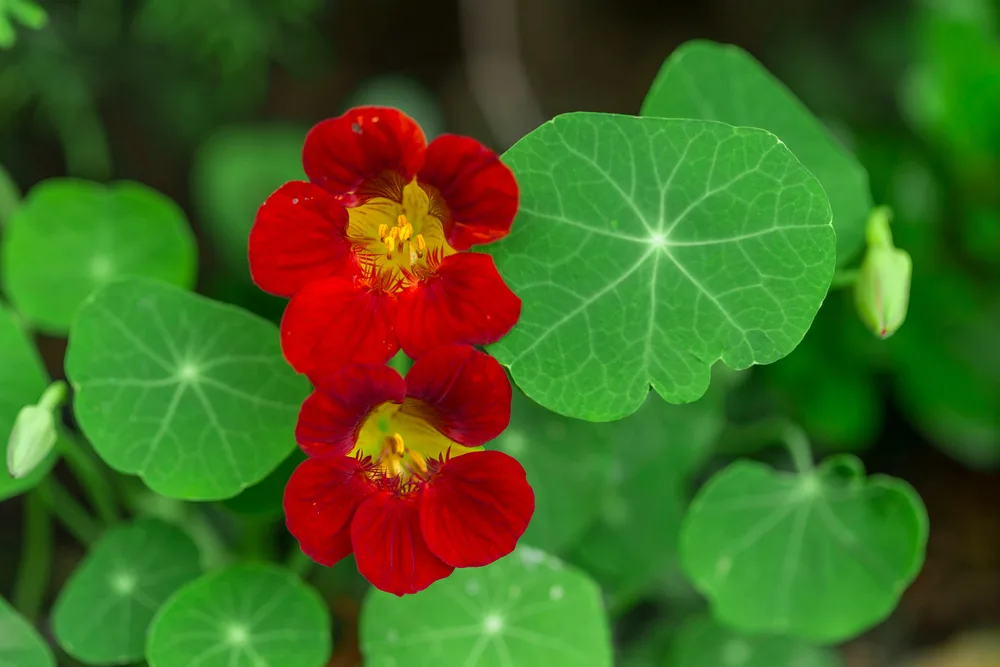
One of the things that make nasturtiums so great is their ability to act as a substitute for a multitude of foods. The texture and taste profile of nasturtium leaves makes them a great alternative for spinach. Any dish that calls for spinach will taste just as good (perhaps even better) with nasturtium leaves.
A personal favorite spinach dish of mine that is just as delicious with nasturtium leaves is my mom’s special creamy spinach and chicken dish.
It’s not a difficult recipe to follow, and unfortunately, I can’t give exact measurements – everything in my mother’s house is done by feeling, with recipes being mere guidelines.
All you need is to cook some chicken pieces in a pan as you would normally. While that’s sizzling away, start frying your nasturtium leaves. Once they’ve cooked, pour in about a cup of heavy cream and simmer. After the cream has warmed through, pour your leafy creamy mix over your cooked chicken pieces, reduce the heat, and cover for another few minutes.
I like to add some cheese to the creamy mix – parmesan is particularly good with this dish.
It’s a rich yet simple meal made even more delicious by using nasturtium leaves which give that extra peppery punch.
7. Nasturtium Stems as Garnish
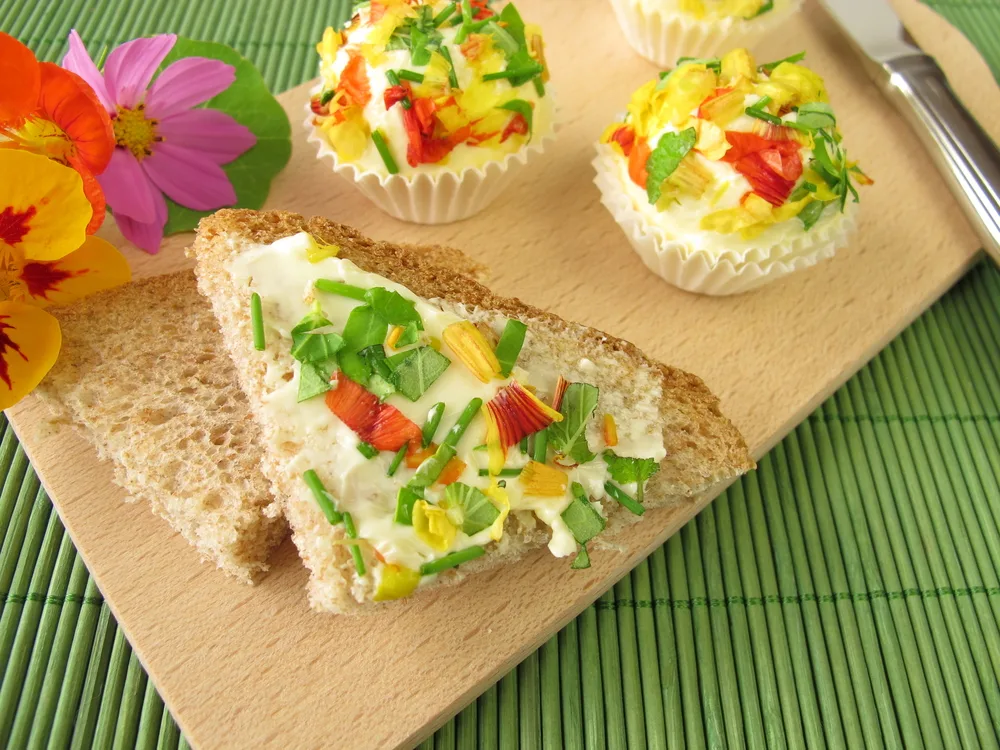
Just as nasturtium leaves make a great alternative to spinach, its stems make a great replacement for chives – especially when it comes to garnishing dishes.
You can also make a compound butter using nasturtium stems instead of the flowers; it’ll still have that characteristic nasturtium bite, with the fresh crunch that its stems are known for, much like chive butter.
Chopped nasturtium stems can be mixed in with mustard to make a unique sandwich spread or simply garnish your open toasted sandwich with some stems and cheese for a simple flavorful lunch.
8. Stuffed Nasturtium Leaves
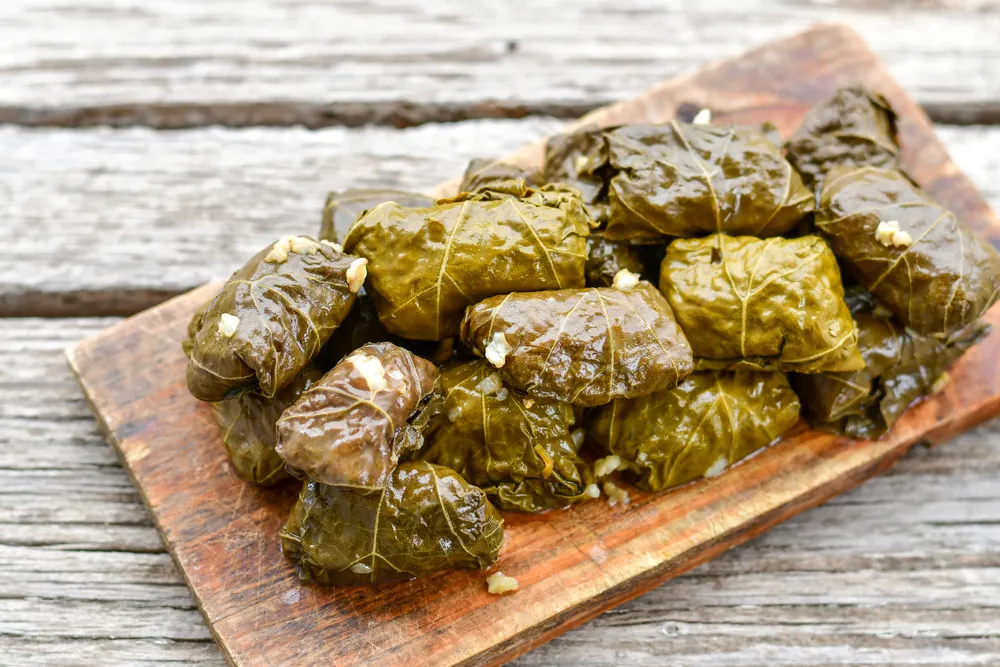
Stuffed nasturtium leaves are another way to spice up ordinary dishes. This dish is a simple spin on Greek dolmades that can easily be spruced up in any way to suit any diet or dietary need.
You’ll need an assortment of delicious fillings and large nasturtium leaves. Fill your leaves with your fillings, pop them into the oven and you’ll have a delicious snack or starter in no time.
For the full recipe and stuffed nasturtium leaf adaptations, head over to Attainable Sustainable.
9. Nasturtium Poppers
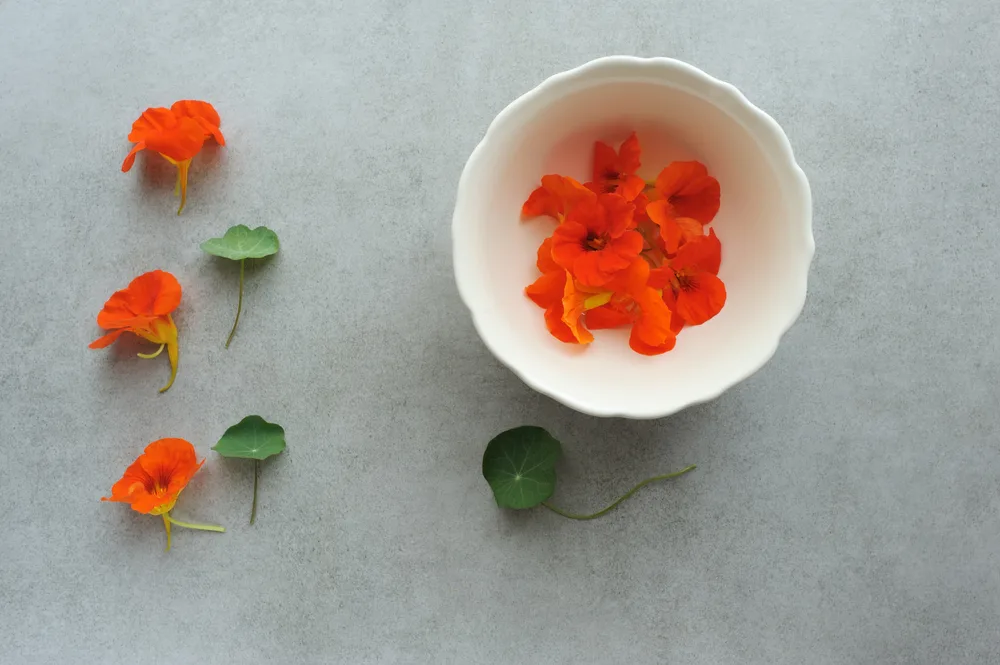
Creamy poppers are without a doubt one of my favorite snacks. This nasturtium rendition is different from traditional poppers though, in taste and serving.
You’ll need…
- 12 nasturtium flowers (freshly picked)
- 1 teaspoon of fresh rosemary (finely chopped)
- 2 cloves garlic (minced)
- 1 teaspoon of shredded lemon zest
- 2 ounces of soft goat cheese
- 1 tablespoon of olive oil
- 2 dried tomatoes, finely chopped
First, you’ll need to let your goat cheese stand and warm to room temperature – this should take about 30 minutes. In the meantime, mix your tomatoes, lemon zest, rosemary, and garlic. Once the cheese has warmed, combine it with your mix.
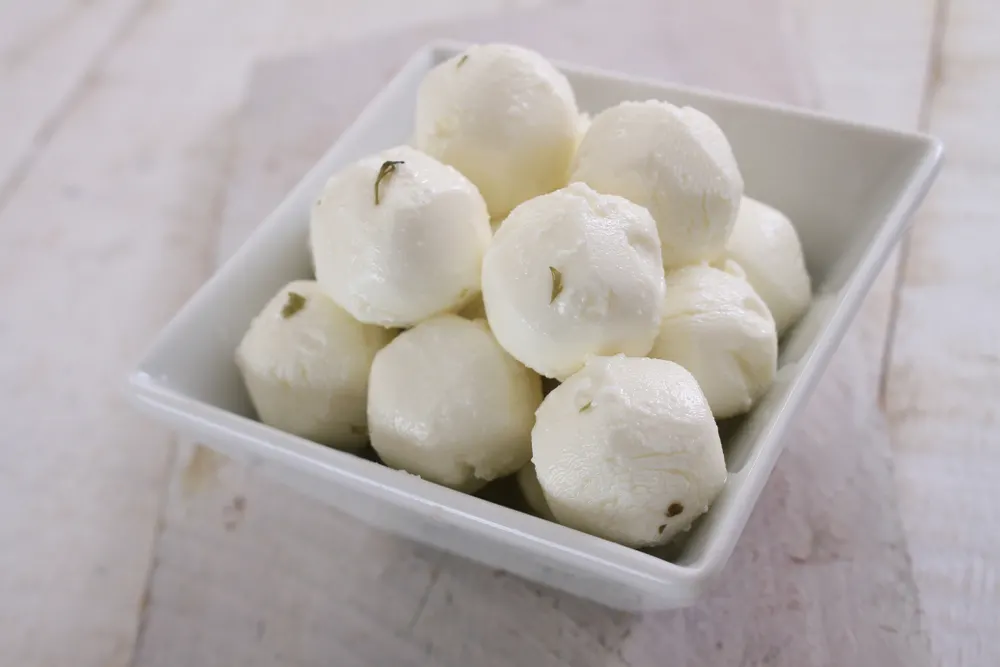
Next, shape your cheesy goodness into small balls, place them onto a plate, cover, and chill. When you’re ready, grab your cheesy balls and pop them into your nasturtium flowers, and drizzle with a touch of olive oil.
In Drinks …
10. Nasturtium Tea
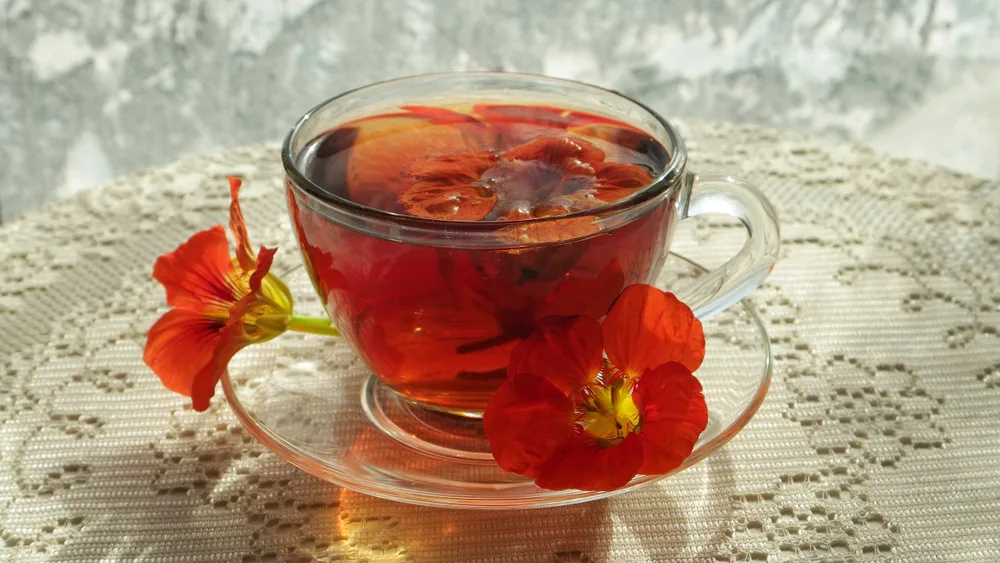
The best way to reap some of the health benefits of nasturtium is by making tea. This warm cup of spicy goodness will help soothe sore throats and other colds and flu symptoms.
This tea can also be used as more than a drink. Nasturtium’s antioxidant properties allegedly make it a wonderful self-care product too. Some use this tea as a hair tonic to improve circulation and encourage hair growth, or as a face tonic to fight oily skin.
For this simple, yet highly useful tea, you’ll need…
- 1 cup of nasturtium flowers and leaves
- 1 liter of boiling water
Place your nasturtium leaves and flowers in a jug of boiling water. Let the mixture brew for about 15 minutes and strain using a sieve. It is as simple as that.
You can add a teaspoon of honey for some added sweetness and soothing abilities if you’re drinking this tea.
11. Nasturtium Infused Vodka

Nasturtiums can add spice to alcoholic beverages too. Their vibrant flowers are often used as an edible drink garnish.
But, their beauty and tastiness can be used for even more – making a nasturtium-infused vodka or tequila for one. This easy recipe will make a great gift or a talking point when pulled out of your drinks cupboard the next time you have a party.
All you need is some vodka and clean, freshly picked nasturtium flowers. You should use about 10 flowers per cup of vodka.
Stuff your flowers into a bottle of vodka and stow them away for a few days or even weeks. The longer the flowers are left to infuse, the stronger the nasturtium flavor will be.
12. Nasturtium Flower Wine

For the wine connoisseurs reading this, nasturtium wine is mild with a bit of body and a hint of spice. It’s a near dry wine with a dark amber hue (depending on the color flowers you use).
To make 1 gallon of nasturtium wine, you’ll need…
- 2 cups of nasturtium flowers
- 1 banana
- 2 pounds of granulated sugar
- 1 teabag
- 1 gallon of water
- Wine yeast
Pop your flowers into a large fermenting bottle along with your sugar and just over 8 cups of hot water. Next throw in your banana, peel and all, with the teabag.
Let your concoctions infuse completely, then fill the bottle with cool water to the 1-gallon mark. Next, throw in your wine yeast. Seal the bottle and leave for 3-5 days, then strain and pour into a bottle. Once it has finished fermenting, rack again and set aside for about 6 months.
Here’s a full tutorial for making nasturtium flower wine.
In Desserts…
13. Cake décor
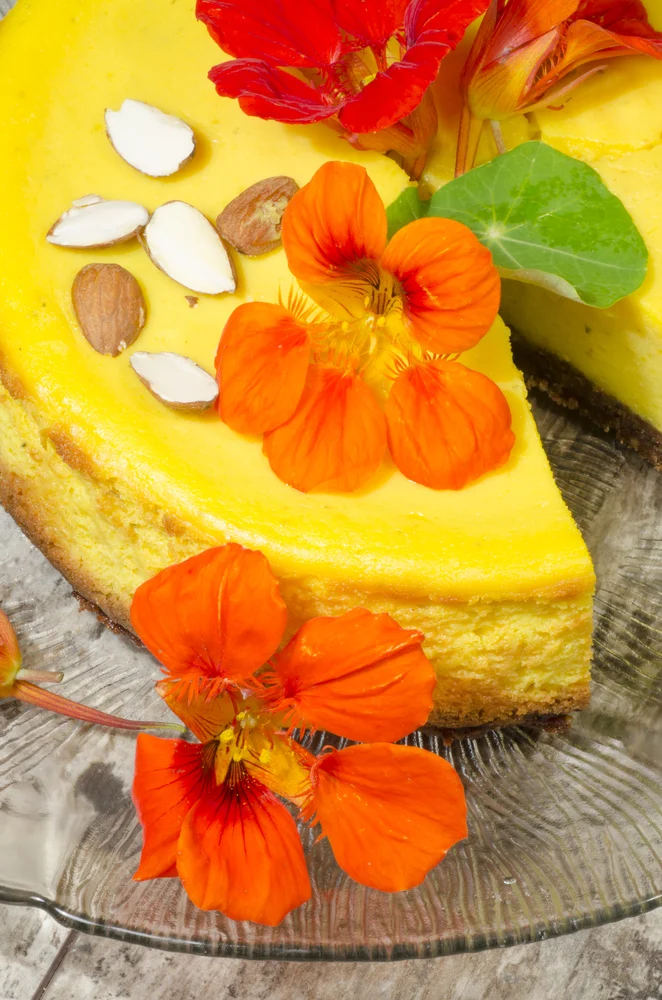
Using nasturtium flowers as decoration is a no-brainer – they’re stunningly vibrant, adding magnificent pops of color to a simple cake. There’s also nothing better than decorations that look like they can’t be eaten, even though they can be safely ingested. Sweet and spicy deception.
Head over to The Diary of a Mad Hausfrau to see the recipe of a scrumptious lemon layer cake covered in nasturtiums.
14. Nasturtium Ice-cream With Goat Cheese
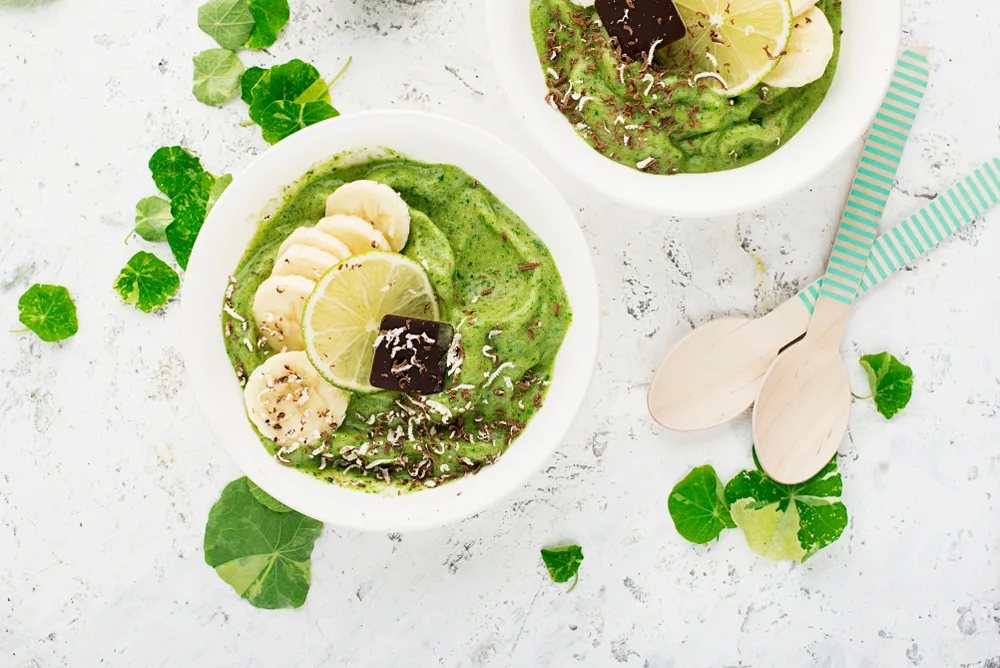
When you think of nasturtiums, I’m sure, after everything you’ve read, your first thought wouldn’t be ice cream. But the warm spicy flavors create an interesting sweet and savory flavor profile that ice cream sometimes seems to be lacking.
You’ll need…
- 6 egg yolks
- 1/3 cup of nasturtium flowers (finely chopped)
- 1 and half a cup of milk
- 2 or 3 cups of sugar (divided)
- 1 cup of goat cheese
- Pinch of salt
Here’s a full tutorial for making nasturtium ice cream.
15. Nasturtium Crumble
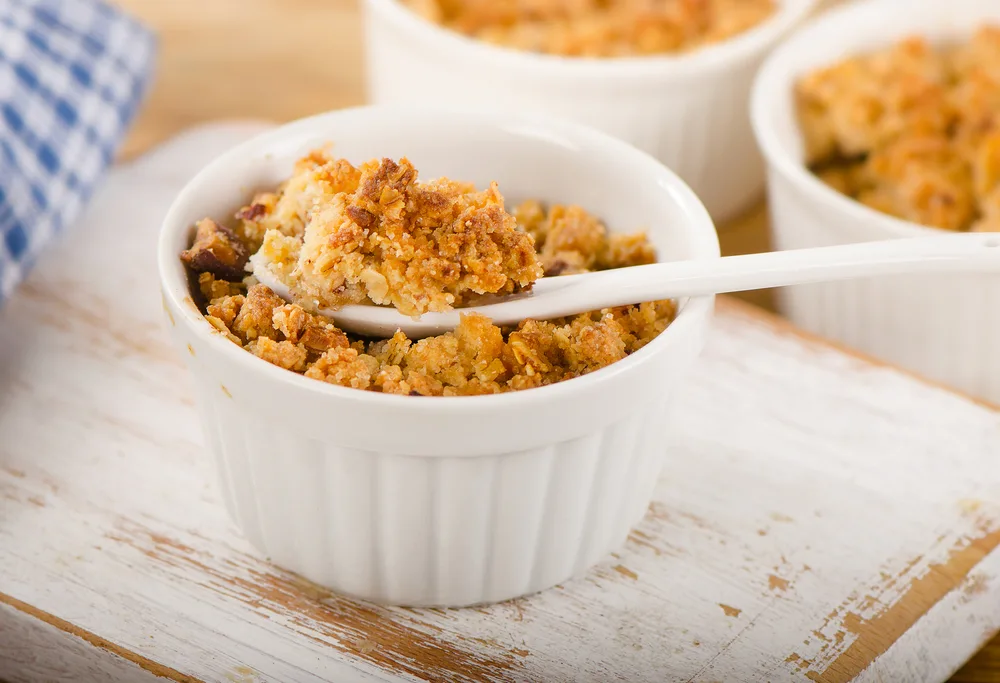
This nasturtium crumble is a wonderful side dish, pairing well with a variety of dishes. It’ll go great with ice cream too – even your homemade nasturtium goat cheese ice cream.
You could even have this hazelnut nasturtium delight as a stand-alone midnight snack.
Head over to ChefSteps for the full recipe.

Get the famous Rural Sprout newsletter delivered to your inbox.
Including Sunday ramblings from our editor, Tracey, as well as “What’s Up Wednesday” our roundup of what’s in season and new article updates and alerts.

